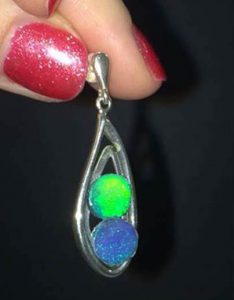An international team of researchers led by experts at the Universities of Surrey and Sussex, used graphene to develop an opal-like material that -they say- could be the cornerstone of next-generation smart sensors.
The colour-changing, flexible photonic crystals can respond sensitively to light, temperature, strain or other physical and chemical stimuli. This means that they could be used in sensors that warn about an imminent earthquake, in biometric and anti-counterfeiting applications and in healthcare applications such as wrist bands that change colour to indicate to patients if their healthcare practitioner has washed their hands.

In a paper published in the journal Advanced Functional Materials, the researchers explain that their work provides the first experimental demonstration of mechanically robust yet soft, free-standing and flexible, polymer-based opals containing solution-exfoliated pristine graphene.
“Polymer particles are used to manufacture everyday objects such as inks and paints,” Joseph Keddie, co-author of the study and a professor at the University of Surrey, said in a media statement. “In this research, we were able to finely distribute graphene at distances comparable to the wavelengths of visible light and showed how adding tiny amounts of the two-dimensional wonder-material leads to emerging new capabilities.”
According to Keddie and his colleagues, given the versatility of the crystals, the method they used represents a simple, inexpensive and scalable approach to produce multi-functional graphene infused synthetic opals.
